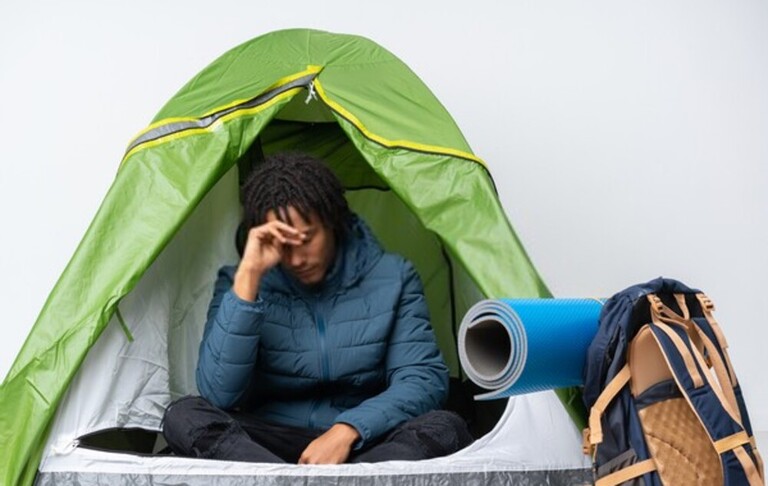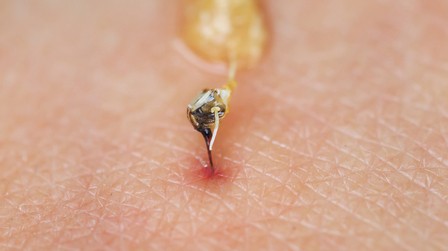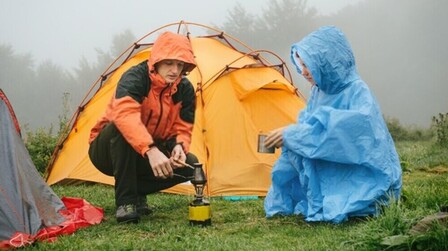Getting sick while you’re in the woods is a very bad scenario because you’re away from the doctor or a hospital. The good news, however, is that you can identify and deal with some illness on your own.
You’ll have to learn about that, but don’t worry, it is easy. Here are what to do if you get sick in the backcountry:
What Makes You Sick In The Woods?

Below are the most popular causes making people sick while on an outdoor trip, according to the NOLS database:
- 0.2% Anaphylaxis
- 0.3% tick-related illness
- 0.4% Seizure
- 0.5% Diabetes issues
- 0.5% Heat illness
- 0.6% Hypothermia
- 0.7% Cardiac issues
- 1% Asthma
- 1% Appendicitis
- 2.9% Acute mountain sickness
- 5% Dehydration
- 6% Mental health issues
What To Do If You Get Sick In The Backcountry
Here is a step-by-step guide to help you deal with general illness in the woods:
Step 1: Recognize signs and symptoms

Step 2: Plan for the best treatment options

Step 3: Consider if you need to meet the doctor due to the worse signs and symptoms


Most Common Illnesses You Might Get In The Backcountry, Symptoms, And How To Treat
Signs and symptoms | How to treat | When to evacuate | Prevent | |
UTI | -Feel itchy in the lady parts -When you pee, it burns hot | -Frequently flush your bottom parts with clean water -Use over-the-counter antifungal medicine, Monistat, or Pyridium for UTIs | See a doctor if your testicular or lady parts keep feeling pain or swelling although you took medicine | Keep “it” clean and breathable Wear moisture-wicking undies |
Flu-like Illness | -Tiredness/ fatigue -Headaches -Body or muscle aches -Stuffy or runny nose -Sore throat -Cough -Fever -Diarrhea and vomiting | -Drink more water -Rest as much as you can -Use a thermometer to frequently check your body temperature (once/hour) -Use cough drops, acetaminophen, or Ibuprofen | -Evacuate if your throat feels too painful to swallow, along with headaches and a stiff neck -if you have a fever of more than 102 degrees F for over 2 days. | -Not allow anyone reaches into your gorp bag -Cover your mouth when coughing -Get flu vaccine before the trip |
Toothaches | -A terrible smell from your mouth -You have an infected tooth, and it drains out foul-tasting fluid -headache or fever -Swelling around your infected tooth -Your tooth feels painful, either you press on it or chew something. It could be a constant, throbbing, or sharp pain | -Take pain medications, such as acetaminophen, naproxen, ibuprofen, or aspirin (only for children above 16 years old) -Hold a cold compress on the swelling part for 20 minutes/hour -Rinse your mouth with hydrogen peroxide or a warm saltwater | -Your tooth pains terribly even after trying those methods -The foul-tasting drainage is more and taste worse -Your fever or headache doesn’t stop/decrease after 48 hours | -Brush your teeth properly and frequently using a fluoride toothpaste -Go to a dentist twice/year for intensive cleaning -Floss at least once/day. |
Diarrhea, Vomiting, and Nausea | -Diarrhea -Vomiting -Nausea -Feel cramped -Fever | -Rest as much as you can -Drink enough water -Use Imodium, acetaminophen, or Pepto-Bismol to decrease/stop those symptoms for a while | -After 24 or 48 hours, you are unable to keep liquids down -The fever remains above 102 degrees F after 2 days -Cramping pain constantly lasts for 24 hours | -Frequently wash your hands with sanitizer for at least 20 seconds -Wash your dishes with hot water and soap |
Allergic Reactions | -Swollen face, eyes, tongue, or lips -A red, itchy, raised hives (rash) -Cough, shortness of breath, chest tightness, and wheezing -Watering, red, itchy eyes -Blocked, itchy, or runny nose -Sneezing | -Use over-the-counter antihistamines or topical cortisone for itching -wash your skin/face using a skin cleanser -Not scratching to prevent infection | -unconsciousness -breathe weakly -the blister/rash is terribly infected (look for spreading red lines, severe heat, swelling, and oozing) | -Carry medications -try not to expose to the allergen -don’t touch underbrush -wear long, thick sleeves and pants when walking/hiking through unknown underbrush -learn to determine dangerous plants and where they usually grow |
Abdominal Pain | -your abdomen is swelling -when touching your abdomen, it is tender seriously -yellow skin spot/area -weight loss -persistent vomiting and nausea -bloody stools -fever -severe pain | -eat mild foods & avoid solid foods for several hours -not eat dairy products -rest as much as possible -sip clear fluids or clean water -take medicines for treating inflammatory bowel disease or gastroesophageal reflux disease | -the signs and symptoms don’t disappear after 12 hours -fever more than 102 degrees F for 12 hours -Coincides with blood in vomit, feces, or urine | -exercise frequently -eat slowly and regularly -create a proper, balanced, fiber-filled diet -build frequent bowel habits -drink enough water |
Conclusion

Thanks a lot for reading!













